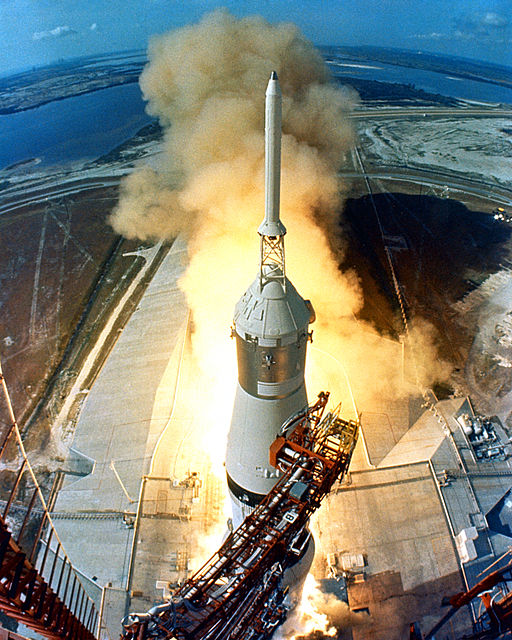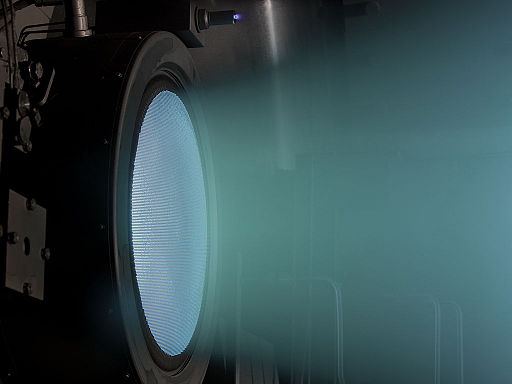Newton's second law allows us to calculate the motion of a body under the influence of various forces.

However, Newton's starting point was actually momentum.

Momentum is a linear property of matter. It is conserved in interactions in closed systems.

Space travel poses interesting challenges for propulsion. Space craft leave Earth's surface traditionally using
a rocket that 'blasts' exhaust down toward the Earth. Per Newton's 3rd law (every action has an equal and
opposite reaction), the rocket is pushed up into the air. However, in space, there is nothing to push
against. Space craft must use a 'momentum drive' of some configuration.

image courtesy NASA
A 'standard' rocket engine can be used, for example, the apollo missions to the moon. In this case
a propellant is thrust out the back of the rocket (water created from the combustion of oxygen and hydrogen)
The momentum of the exiting water creates an equal and opposite momentum change in the rocket, pushing it forward.
This is very inefficient for prolonged space travel. The entire fuel load must be carried in the rocket and
exit speeds are relatively slow.
Ion Thrusters

image courtesy NASA
Ion drives (of which there are many variations), work by 'firing' ions out of the back of the rocket. The ions
exit with much higher velocities that 'standard' combusted rocket fuel. This significantly increases the 'v' in momentum
p = mv, however, the mass ejected is relatively tiny. For this reason ion drives (or thrusters) are useless for getting out
of Earth's gravity, however, for interplanetary distances they are quite efficient.
Light sails

image courtesy Planetary Society
Solar sails are another possible interstellar propulsion system. The solar wind is the range of particles ejected by
stars. Space is not empty, stars continually eject billions of tons of electrons, protons and neutrinos. All of which
are travelling at enourmous speeds (significant fractions of the speed of light) and all of which have a mass (though tiny).
There are two varieties of solar sails. In one version, the sail absorbs the particles, thus gaining the momentum of the particle and adding this
momentum to the overall momentum of the space ship. In the other version, the particles are reflected. In a reflected system, the space
craft could gain up to twice the momentum of each particle. The reflected system has a second advantage in that the overall,
momentum change to the space ship is along the normal between the incoming and outgoing trajectories. This allows for some
version of steering, though the ship will always be sailing 'down wind'.
Because solar sails are in the 'full' radiation of stars, they have to be made out of very pure lattice materials and are both very
expensive and fragile.
Lectures
Lecture 1.2 - Forces and Momentum
Videos
Stash creative, A tale of momentum and inertia (fun)
Prof Dave, Impulse and momentum
Crash course, Collisons
Matt Anderson, Momentum and force
Matt Anderson, Momentum collisions in 2D
|



